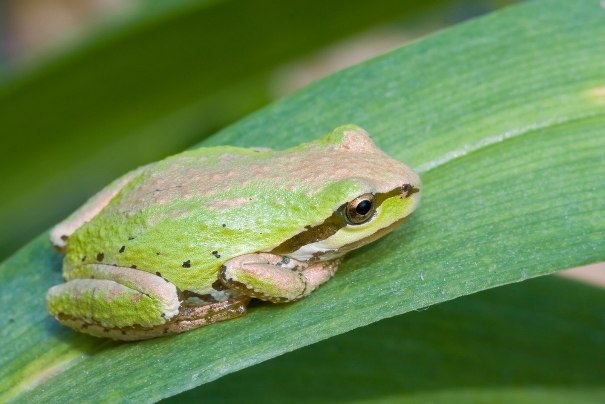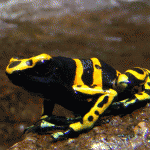A common North American frog is identified as the carrier of the deadly chytridiomycosis.
Amphibians have been rapidly declining since the 1970s, but today the most pervasive problem they face is chytridiomycosis, a deadly disease caused by a fungal pathogen which is swiftly decimating frog populations worldwide — 32 per cent of all amphibian species are either threatened or extinct.
Some frog species such as the common Pacific chorus frog (Pseudacris regilla) have shown resistance against the infamous disease. Nonetheless, they act as carriers and spread the fungus to other populations.
“We found that the vast majority of Pacific chorus frogs don’t die or show symptoms even with surprisingly high levels of infection. They are able to go about life as normal, moving over land and carrying the disease to new locations,” said Natalie Reeder, a researcher at San Francisco State University (SFSU), in a statement.
Pseudacris regilla is one of the most common frogs on the west coast of North America. Their abundance and mobility make them dangerously effective at spreading the fungus. They have sticky toe-pads that help them climb trees and, compared to other species, they can survive longer periods out of the water.
Chytridiomycosis is caused by a fungus called Batrachochytrium dendrobatidis (Bd). It invades the cells of the slightly tougher, outermost layer of the skin. Frog’s skin does not act as a barrier; rather it is a living membrane through which the animal breathes. Infected skin thickens, preventing gas exchange and thermoregulation.
According to the new study conducted by biologist Vance T Vredenburg and Reeder, Pacific chorus frogs tend to carry greater loads of the disease, making it more infectious compared to other documented carriers of the chytrid, such as the African clawed frog (Xenopus laevis) and the American bullfrog (Rana catesbeiana).
Their study shows an important survival mechanism that could help Pacific chorus frogs survive infection. Rather than the entire skin of the frog thickening, highly infected Pacific chorus frogs displayed a mosaic of infected, thicker skin adjacent to normal skin. “It looks like this patchy infection allows the healthy skin to continue functioning normally,” Vredenburg said.
Although it is unknown what causes this mosaic effect, the biologists suspect beneficial skin bacteria may play a role. These findings could assist in the development of treatments to help more endangered frog species survive this global fungal epidemic that has spread to nearly 600 species of frogs and has driven more than 200 species of the 6,674 known amphibian species to extinction.
Source: PLos One







